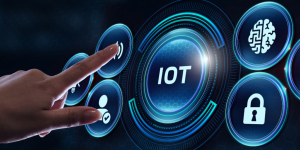In today’s interconnected world, the Internet of Things (IoT) has emerged as a transformative technology, revolutionizing various industries. One of its key components is IoT sensor monitoring software, which enables organizations to gather, analyze, and act upon real-time data collected by a network of sensors. In this blog post, we will delve into the fascinating world of IoT sensor monitoring software and explore its benefits, applications, and future potential.
Understanding IoT Sensor Monitoring Software
IoT sensor monitoring software serves as the backbone of IoT systems, facilitating the seamless integration of sensors, data processing, and decision-making. This software enables the collection of data from diverse sensors, such as temperature, humidity, pressure, motion, and more. It provides a unified platform for managing and visualizing sensor data, making it easier for organizations to monitor, control, and optimize their operations
Benefits of IoT Sensor Monitoring Software
- Real-time insights: With IoT sensor monitoring software, organizations gain access to real-time data, allowing them to monitor processes, detect anomalies, and make informed decisions promptly.
- Improved operational efficiency: By leveraging sensor data, organizations can identify inefficiencies, optimize workflows, and reduce operational costs.
- Enhanced safety and security: IoT sensor monitoring software enables proactive monitoring of critical parameters, ensuring prompt detection and response to potential safety or security threats.
- Predictive maintenance: By analyzing sensor data, organizations can predict equipment failures, schedule maintenance activities, and minimize downtime.
Applications of IoT Sensor Monitoring Software
- Industrial automation: IoT sensor monitoring software is widely used in manufacturing, enabling remote monitoring of machinery, predictive maintenance, and real-time quality control.
- Smart cities: It plays a vital role in creating intelligent urban environments, monitoring traffic flow, managing energy consumption, and optimizing waste management.
- Healthcare: IoT sensor monitoring software assists in remote patient monitoring, medication management, and real-time tracking of medical equipment.
- Agriculture: It helps farmers monitor soil moisture, temperature, and crop health, enabling precise irrigation, optimizing resource utilization, and increasing yields.
Future Potential and Challenges
The future of IoT sensor monitoring software looks promising. As technology advances, we can expect increased sensor accuracy, reduced costs, and improved connectivity. Furthermore, the integration of artificial intelligence and machine learning algorithms will enable more sophisticated data analysis and predictive capabilities.
However, challenges such as data privacy, cybersecurity, and interoperability standards must be addressed to fully realize the potential of IoT sensor monitoring software. Collaboration between industry stakeholders, policymakers, and technology experts is crucial to overcome these challenges and foster a secure and interconnected IoT ecosystem.
Conclusion
IoT sensor monitoring software is a key enabler of the Internet of Things, facilitating the collection, analysis, and utilization of sensor data. Its benefits span across various industries, improving operational efficiency, enhancing safety, and unlocking new possibilities for innovation. As the technology continues to evolve, it is essential for organizations to harness the potential of IoT sensor monitoring software to gain a competitive edge in an increasingly connected world.


